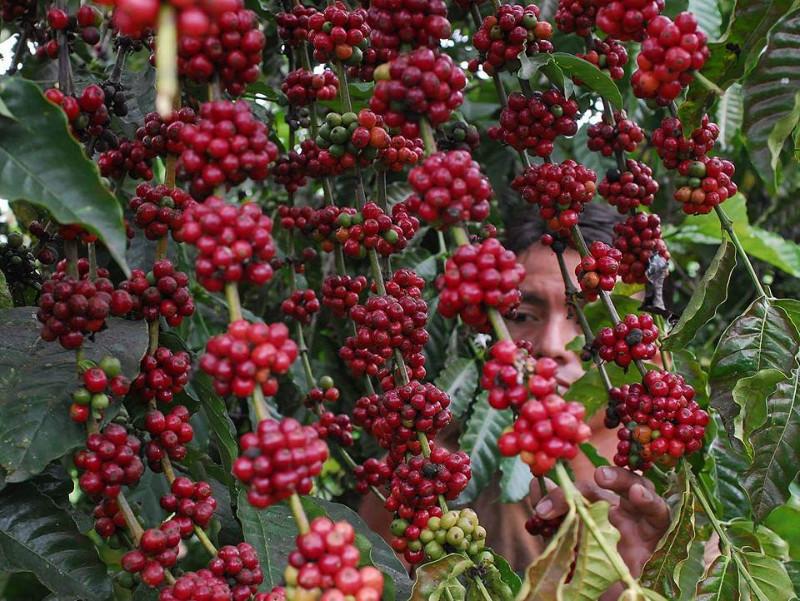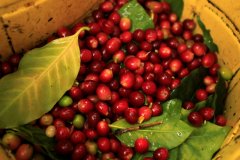Introduction to the taste change of Rwandan coffee _ Rwanda coffee processing process

Professional coffee knowledge exchange more coffee bean information please follow the coffee workshop (Wechat official account cafe_style)
Rwanda has always been given good coffee growing conditions: high altitude, volcanic soil, rich sunshine and Cabernet Sauvignon. Rwanda is also known as the "country of a thousand mountains" because many coffee trees are planted on mountains between 1700 and 2000 meters above sea level. Rwandan coffee is a world-class enjoyment, which is not only more balanced than Kenyan coffee, but also can compete with Chinese and American coffee. Generally speaking, Rwandan coffee has the sweetness of fruit, the fragrance of flowers and the aftertaste of black tea.
The mode of operation of coffee production lines often depends on the country of production, while coffee in Rwanda is produced entirely by small farmers rather than large-scale enterprises. Compared with farms in Brazil, even small ones reach 20 hectares, while the 0.1-0.2 hectares in Rwanda are negligible.
The farmers here will first pick the coffee beans from the coffee trees with their hands, then send them to the processing desk, and be trampled by the barefoot, singing farmers. These coffees are sweet with a clear taste of lemon and a faint taste of berries and chocolate.
For these developing countries, when the demand for special coffee becomes more and more popular, coffee will naturally become one of the main development directions of the country, in order to make continuous progress and be recognized by the international market.
When the coffee beans are separated from the fruit, the brown farmers will sort the beans one by one with rake and water, and then bask in the sun. As the coffee beans are sensitive to air humidity, whenever the breeze blows suddenly, the farmer will quickly cover them with a tarp.
Rwanda coffee flavor
The taste of coffee in Rwanda varies a lot: Cherry, raisin, lime, acrylic, cantaloupe, orange, honey, candy, apricot, plum and so on.
In fact, the taste of these fruits are certified by excellent growing conditions. According to information provided on National Agricultural Export Development Board, there are currently about 400000 small production units in Rwanda, and farmland is generally located at an altitude of 1700-2000, which creates a multi-layered flavor of coffee. Most of the country's coffee production comes from the west and south, but in fact it is produced in five regions. In the southwest, it is mainly the Virunga of the volcanic region, and the famous Sliverback mountain is also here. On the west side of the country is the Kivu district next to Lake Kivu. As for the central part of the country, there is the Kizi Rift area. Then go to the southern end of the map and there is a lower elevation of Akagera, about 1300 higher. Finally, there is the Muhazi area to the east.
The characteristics of the region are different, but generally speaking, all regions of Rwanda are high-altitude and have high-nitrogen volcanic soil. If you want to sing high-quality coffee, these conditions are indispensable.
Coffee treatment
Once upon a time, coffee was handled differently from each farm, and beans from different farms would be gathered together and mixed with neighboring ones.
After the genocide, the country began to open up to accept foreign aid, and revitalizing the coffee industry has become the country's top priority. As a result, domestic programs such as PEARL and SPREAD began to appear, providing consistent training for farmers and setting up washing tables to match the traditional coffee treatment in East Africa. Burundi is one of the countries that use this approach and make the most of it.
Another point worth mentioning is Africa's unique Fully washed treatment, which soaks coffee beans twice, which is not common in Latin America.
The most commendable thing about Rwandan coffee is that after the coffee cherries are harvested, farmers pick out the immature green cherries first. The ripe cherries are then separated in the sink, and only the red cherries are sent to the sheller. According to the weather conditions at that time, coffee cherries with remaining pectin will ferment for 24-48 hours. The purpose of fermentation is to avoid damaging the taste of coffee. Then send the clean coffee beans that still have sheepskin to dry. All the coffee will be dried on the net bed for 15-22 days, and the water content will be about 11%. When the weather is too hot, the farmer must cover them with a cloth, so that the drying process will be completed prematurely.
The best Rwandan beans should be white, some drying processes should be completed in time, and there should be no cracks in the beans. In this way, more organic compounds can be retained, and the shelf life can be extended while the taste is good.
The treatment of high-altitude Rwandan coffee beans by full-water washing is generally sweet and thick.
END
Important Notice :
前街咖啡 FrontStreet Coffee has moved to new addredd:
FrontStreet Coffee Address: 315,Donghua East Road,GuangZhou
Tel:020 38364473
- Prev

Kenya Coffee Grade AA introduction _ Kenya Coffee Bean yield and quality Baking recommendations
Professional coffee knowledge exchange more information about coffee beans Please follow the coffee workshop (Wechat official account cafe_style) when it comes to coffee production, Kenya has always had a reputation for excellence in quality. This may have something to do with its geographical location, after all, close to the birthplace of coffee beans. Since coffee beans have traveled from Ethiopia through the mountains to Kenya, Kenya has become
- Next

How many grades in Kopi Luwak? flavor and taste describe how Kopi Luwak drinks Kopi Luwak and how to cook it.
Professional coffee knowledge exchange more coffee bean information please follow the coffee workshop (Wechat official account cafe_style)
Related
- Detailed explanation of Jadeite planting Land in Panamanian Jadeite Manor introduction to the grading system of Jadeite competitive bidding, Red bid, Green bid and Rose Summer
- Story of Coffee planting in Brenka region of Costa Rica Stonehenge Manor anaerobic heavy honey treatment of flavor mouth
- What's on the barrel of Blue Mountain Coffee beans?
- Can American coffee also pull flowers? How to use hot American style to pull out a good-looking pattern?
- Can you make a cold extract with coffee beans? What is the right proportion for cold-extracted coffee formula?
- Indonesian PWN Gold Mandrine Coffee Origin Features Flavor How to Chong? Mandolin coffee is American.
- A brief introduction to the flavor characteristics of Brazilian yellow bourbon coffee beans
- What is the effect of different water quality on the flavor of cold-extracted coffee? What kind of water is best for brewing coffee?
- Why do you think of Rose Summer whenever you mention Panamanian coffee?
- Introduction to the characteristics of authentic blue mountain coffee bean producing areas? What is the CIB Coffee Authority in Jamaica?

